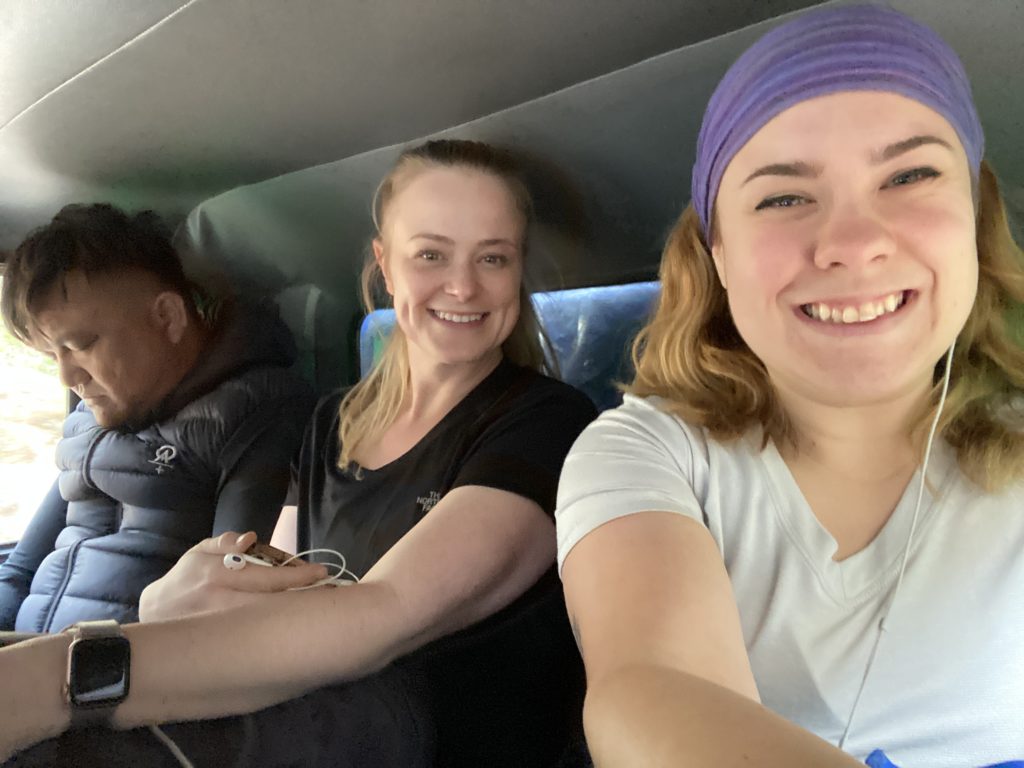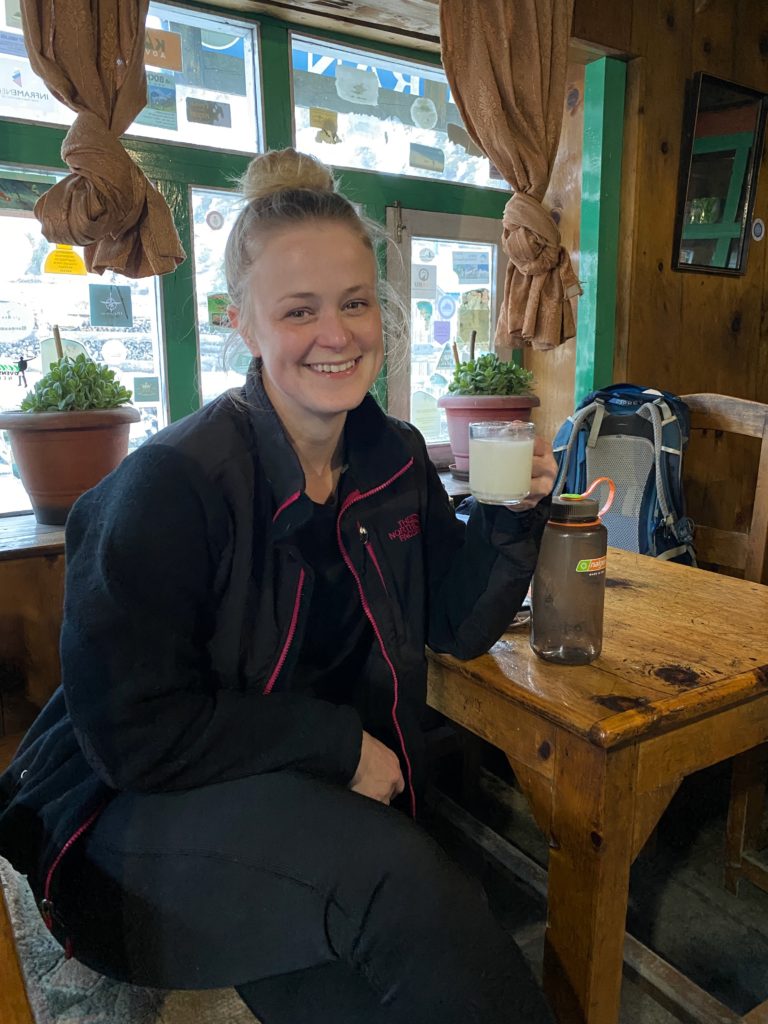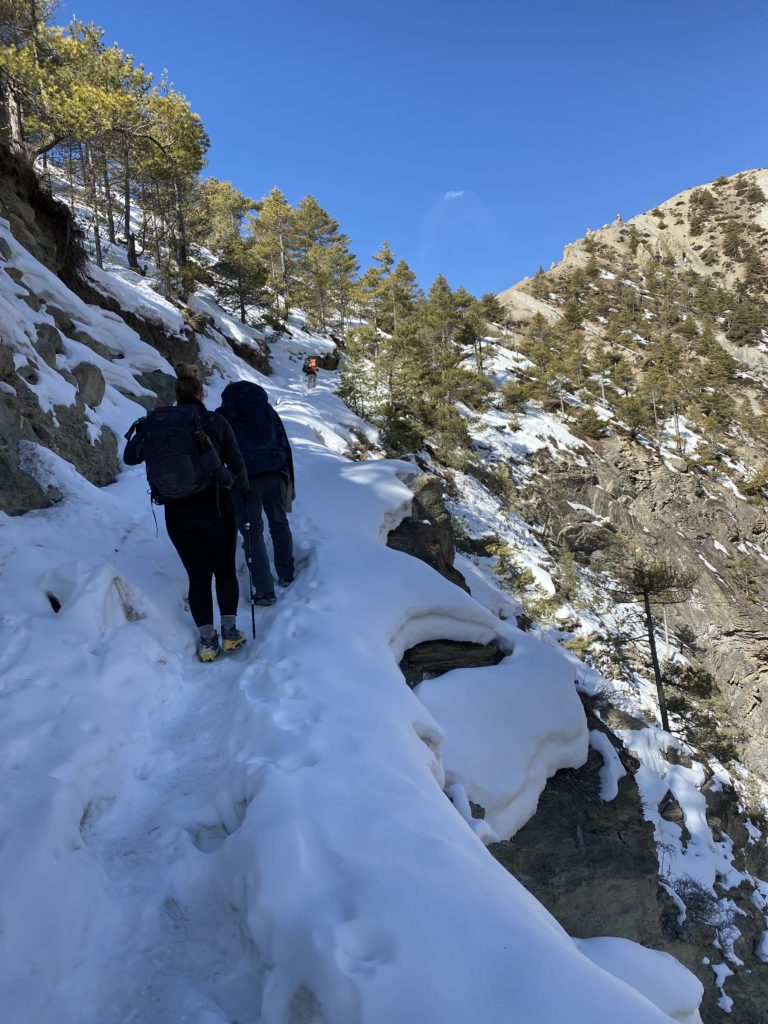There are so many people who trek in Nepal without a guide and have an amazing experience. But after 2 treks in Nepal with a guide, I can honestly say that although you CAN go without a guide - I don’t think you SHOULD.
Nara has been my guide through both the Everest Base Camp trek and more recently, the Annapurna Circuit. I’ve spoken to (and witnessed) so many people trekking without a guide so I have several reasons why I think hiring a local guide is a worthy investment.
1.) ITINERARIES
Navigating most of the popular treks in Nepal is fairly easy if you’re comfortable using a map (and unexpected weather doesn’t redirect you,) but a guide can design a perfect itinerary for the time that you have available. On my most recent trek on the Annapurna Circuit, my trekking mate and I only had 15 days but wanted to combine 3 treks - the Annapurna Circuit, Tilicho Lake and Poon Hill. Our guide is an expert on these areas and also at guiding people at high altitude so he was able to plan an itinerary in which we could cut off a few days by Jeep and still safely combine all 3 treks.

Amanda took this while we were laughing about the fact that Nara could sleep on this wild ride!
2.) ADVANCED LOGISTICS
There is only so much planning that you can do before you reach Nepal. This isn’t the kind of trip where you can get on a third-party booking website and arrange all of your lodging in advance. A guide will have teahouses and lodges that they are familiar with and will be able to tell you where to stay according to what level of lodging you are interested in and what your budget is.
It’s pretty stress-free when you land in Kathmandu and don’t have to figure all of this out yourself. Nara even picked us up from the airport, took us to our hotel and picked us back up the next morning so we could apply for our trekking permits.
And when the weather became unexpectedly bad on the trek, he knew where we could stay - even in a village that was entirely shut down.

Loading my duffel bag into our first micro-bus.
3.) BENEFITS LOCALS
Hiring a guide in Nepal is actually very affordable. The average cost is around $20-30USD a day. When you split this fee between a couple of people or a group, it’s an incredible value for what they offer. Nepal is a country that is overwhelmed with poverty and unemployment and many men leave Nepal to work in other countries as laborers, sending money back home to their families. So when you hire a guide, you are helping to provide a local job to someone and helping them to stay close to their families. In turn, they will spend their money locally which only helps the economy more.

Teaching us about the making of a prayer wheel.
4.) CULTURAL EXPERIENCE
There is only so much you can learn from google and guide books. Trekking in Nepal is so much more than just a wilderness experience - it’s a cultural experience. Yes, you will be trekking through jungles and enormous snow-covered mountains. But you will also be trekking through villages where people live and work. A local guide will be able to explain to you everything from the history of the villages to what kind of plants you’ll see on the trail. Because our guide is Buddhist, he was able to explain to us so many things about the spiritual aspects of trekking in Nepal.
You will also have special cultural experiences when trekking with a local guide. When we stayed the night in Humde, the ladies who ran the teahouse had a good relationship with our guide and because of that, they brought us out rice wine and treated us like family as we all gathered around the fire. Later in the trek, during Holi, we were served a plate of special foods served during the holiday. They didn’t bring this food out to us - they brought it out to our guide and he shared it with us.
You will always be treated well wherever you stay in Nepal, but you will receive some very special treatment when you’re with a guide and those experiences will be priceless.

Prayer wheels along the trail.

Buzzed off of rice wine at high altitude!
5.) LANGUAGE
Most people in Nepal speak some basic English, but there are definitely moments when having someone to translate are really helpful. This helped us to have more conversations with the locals and people like our porter, Bishal, who spoke very little English.
A guide can also teach you some basic words so you will be able to say more to the locals than just “Namaste.”

Bishal and Nara playing a game after a long and day.
6.) MORALE
When the trail got tough, and weather became unexpectedly bad, Nara kept us going. He encouraged us by doing everything from telling us how great we were doing to giving us cookies on our breaks. On particularly tough days, he ordered us milk tea and more cookies when we arrived at our teahouse.
I had never hiked in the snow before, let alone on such narrow and icy trails, and I had a lot of fear on some of the days where we encountered immense amounts of snow. Nara was patient with me, always letting me follow behind him like a little duckling. He stopped with me when I needed to adjust my mindset or catch my breath, and never showed an ounce of doubt or negativity - even during moments when Amanda and I were both feeling negative and complaining.

Our first day on the trail.

Teaching me how to use micro-spikes.
7.) SAFETY
I’ve heard so many people say that they don’t need a guide in Nepal because they are experienced hikers and can just use a map. Though there may be people who luck out by getting perfect weather, it’s important to remember that it’s the Himalayas and the weather can quickly become very dangerous.
We made our way to Yak Kharka one evening with plans to go to Tilicho Lake the following morning. But shortly after we settled into our lodge, the snow started falling. And it kept falling. By morning, the view was nothing like the night before and the trail wasn’t even remotely visible. Nara called ahead to Tilicho Lake and found out that only 3 people had successfully passed, meaning it was very dangerous for us to attempt and we needed to go back down the mountain.
The problem was that nobody had gone on the trail back down the mountain, and what used to be a trail was really a mountainside that was covered hip-deep, or more, in snow. We spent several hours following Nara down that mountain, as he blazed a trail using only a limb that he pulled from the mountainside. We were concerned about frostbite because of the amount of ice and snow in our boots, but there was only one teahouse within 4 hours of our next destination and it was closed. Nara knew the owners and asked them to open long enough to serve us lunch and tea. We were able to rest for a short while and let our feet somewhat dry.
If we hadn’t had Nara on this day, I don’t know what we would have done. It’s not so simple as following a map when there is no trail, and it could have been a situation that became extremely dangerous for us.

Our fearless leader! Can you see the trail?!

We made it to Thorong La Pass!
8.) HIGH ALTITUDE EXPERIENCE
Trekking in Nepal will take you to altitudes that most people have never experienced. On the Everest Base Camp trek, we reached Kala Patthar which sits at 5,644.5 m (18,519 ft.) On the Annapurna Circuit, we crossed over Thorong La Pass at 5,416m (17,769 ft.)
As much as you can attempt to prepare yourself for these altitudes - you won’t understand it until you experience it. And the more experience you have, the more knowledge you possess.
Nara’s experience allowed him to help us have a better trek at altitudes that often overwhelm and debilitate people. He taught us things that made a big difference in OUR experience. When I was struggling the first few days after eating the “western breakfast” of eggs and toast, he told me I needed to start eating soup for breakfast. He was right. I immediately felt better starting my days and went the rest of the trek eating noodle soup 2-3 times a day. When we reached High Camp and the temperatures dropped into the negatives, he checked to make sure we had hot water in our water bottles. He carried altitude medication with him and knew how to advise us whether to take it or not.

This trail was especially terrifying!
9.) THE BEST VIEWS
The views along your entire trek in Nepal will be awe-inspiring. On both of my treks, I’ve found myself stopping just to turn around and take in the scenery. You can see as many photos of the Himalayas as you want but it will never do these enormous mountains any justice. They will take your breath away. But the best vantage points aren’t always right off of the trail. A guide will know where the special views are and also where the accommodations with the best views are.

Leading us to Shree Kharka.
10.) LIFELONG FRIENDSHIPS
Nara and I have remained friends since my first trek in Nepal to Everest Base Camp. I always knew that when I returned to Nepal for another trek, I would hire him again. When he picked me up at the airport in Kathmandu for my second big adventure - it was so welcoming and special to see his familiar face.
He treated us like more than just customers, but like old friends. After we completed our challenging trek on the Annapurna Circuit, he and his wife had us over for dinner. He even arranged the cab to pick us up and take us home. When we arrived at his house, we were welcomed with lots of beer and a feast of incredible Nepalese food, including the best dal bhat that I’ve ever had in my life (and believe me, I’ve had a lot.)

Dal Bhat at Nara’s home

Having fun in Pokhara!
Will you be okay to go without a guide to trek in Nepal? Probably. But I can guarantee that your experience won’t be as fulfilling, or safe, as it would be with the right guide.
Interested in booking an adventure in Nepal with my amazing friend and guide, Nara? Reach out to me on the comments or on Instagram @blairvmeeks and I’ll give you his contact info!
Some of these photos were taken by my friend and trekking mate, Amanda. You can check out her blog at Http://www.thepineapplebackpacker.com

Thank you for writing this! I too did a trek with Nara and Nepal. I am going to post this on a travel page I am part of.
I’m so sorry I somehow missed this comment! Nara is amazing! I would so love to chat more with you!! Thanks for sharing!!!